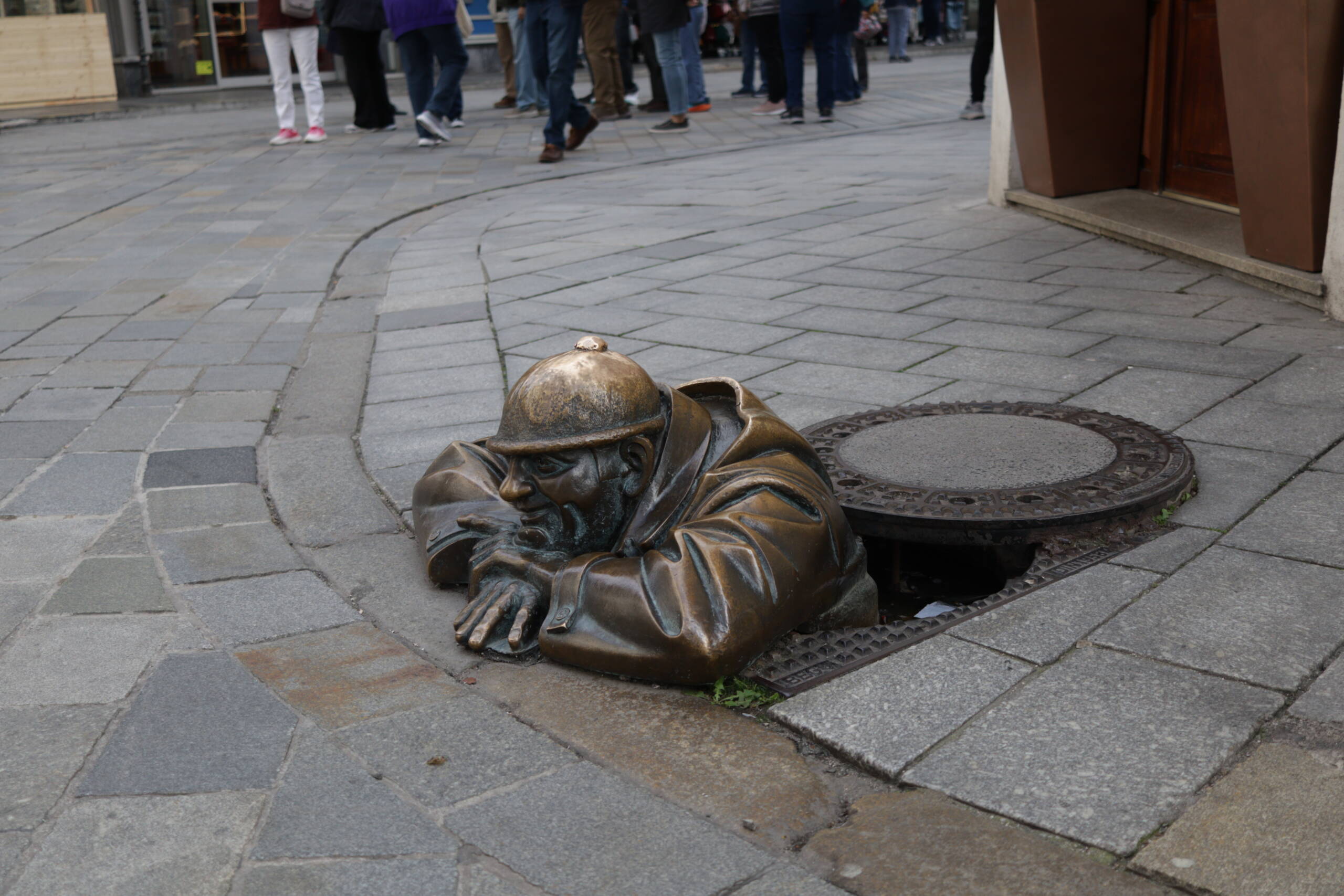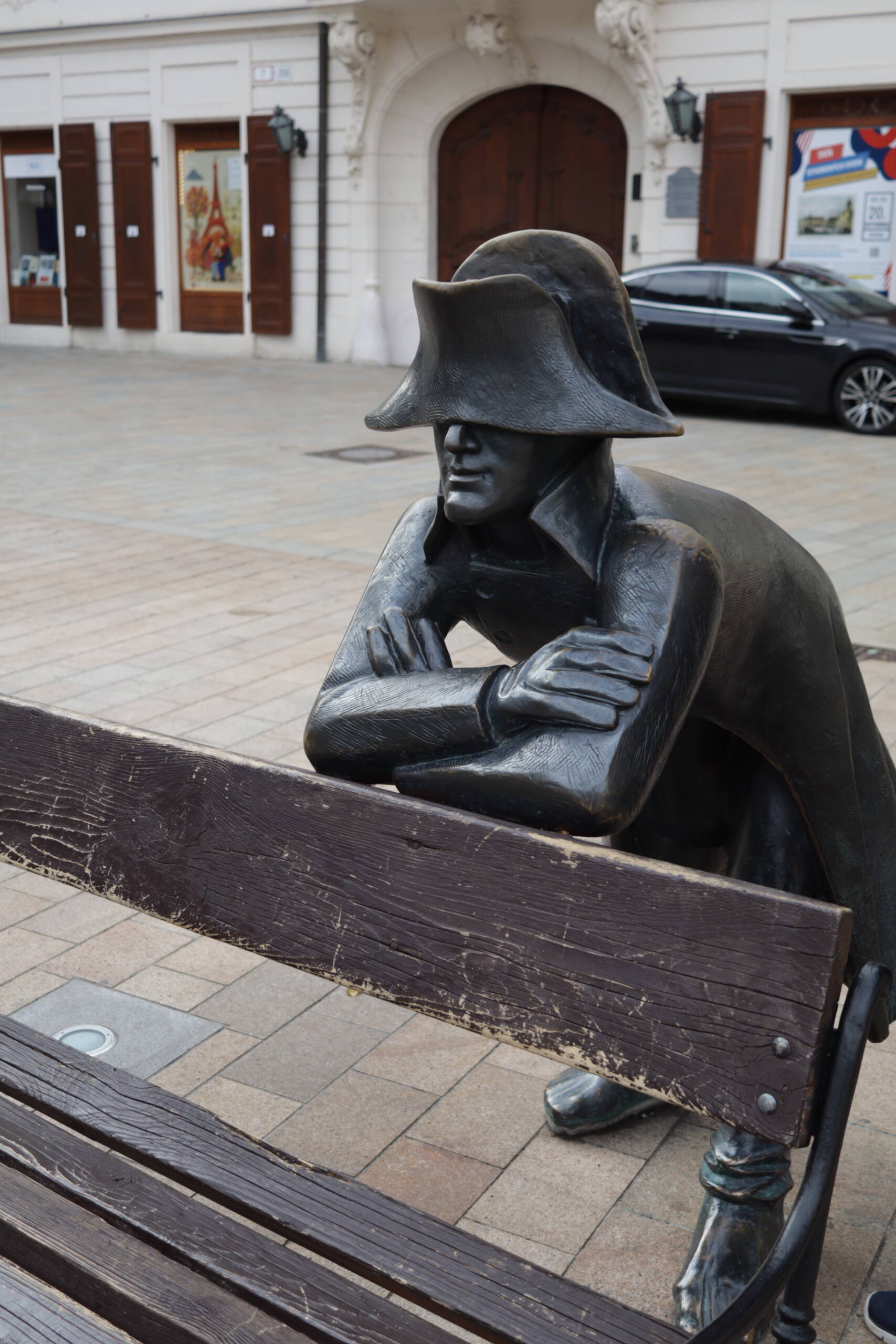There’s something slightly telling when a city tries too hard to be memorable and ends up relying on gimmicks instead of the quiet dignity of genuine history, architecture, or cultural weight. Bratislava has become somewhat infamous for its scattered bronze statues—quirky characters posed in playful, Instagram-ready ways that catch the eye of every wandering tourist. At first glance, they might seem charming, almost like hidden treasures waiting to be discovered. But when you stand back and think about it, they start to feel more like props in a theme park than authentic markers of a city’s story.
Take the first statue, the so-called Čumil—the “Watcher” peeking out of a manhole cover. He’s frozen in bronze, resting his chin on his folded arms as if amused at the parade of legs passing above him. Children giggle, tourists crouch down for photos, and inevitably someone steps on his head without realizing he’s even there. It’s a cute trick, sure, but it’s also a shallow one. Does this figure tell us anything about Bratislava’s past, its cultural struggles, its layered role between empires, or even its real working class? Not really. It’s essentially an ornamental gag, a selfie magnet, serving as a distraction more than a revelation.

Then there’s the bronze Napoleonic soldier leaning lazily over a bench, hat brim obscuring half his face. Tourists line up to sit next to him, draping their arms on the bench as if posing with a friendly local mascot. The irony, of course, is that Napoleon’s shadow in history isn’t exactly a laughing matter—his wars reshaped Europe, including the fate of regions like Slovakia. But here, reduced to a cartoonish guardian of a bench, Napoleon becomes just another harmless accessory for the travel album. Again, the gesture is not to educate, not to deepen the encounter with place, but to polish the city with quirky oddities that can be consumed quickly and without thought.

This isn’t to say Bratislava has no depth. The layered architecture, from Gothic towers to Austro-Hungarian façades, the memories of Pressburg as it was once known, the post-Communist scars still visible beneath the gloss—these are the real stories worth engaging with. But for the casual visitor dropped into the Old Town for a few hours on a Danube cruise, the city leans on these bronze gimmicks to keep attention, like a magician jingling keys to distract a restless child. It’s tourism stripped down to novelty, trading substance for spectacle. And while these statues may lure in the camera clicks, they also reveal something uncomfortable: a city unsure of how to project its genuine values, dressing itself up instead in bronze tricks meant to cover the silence.
Leave a Reply